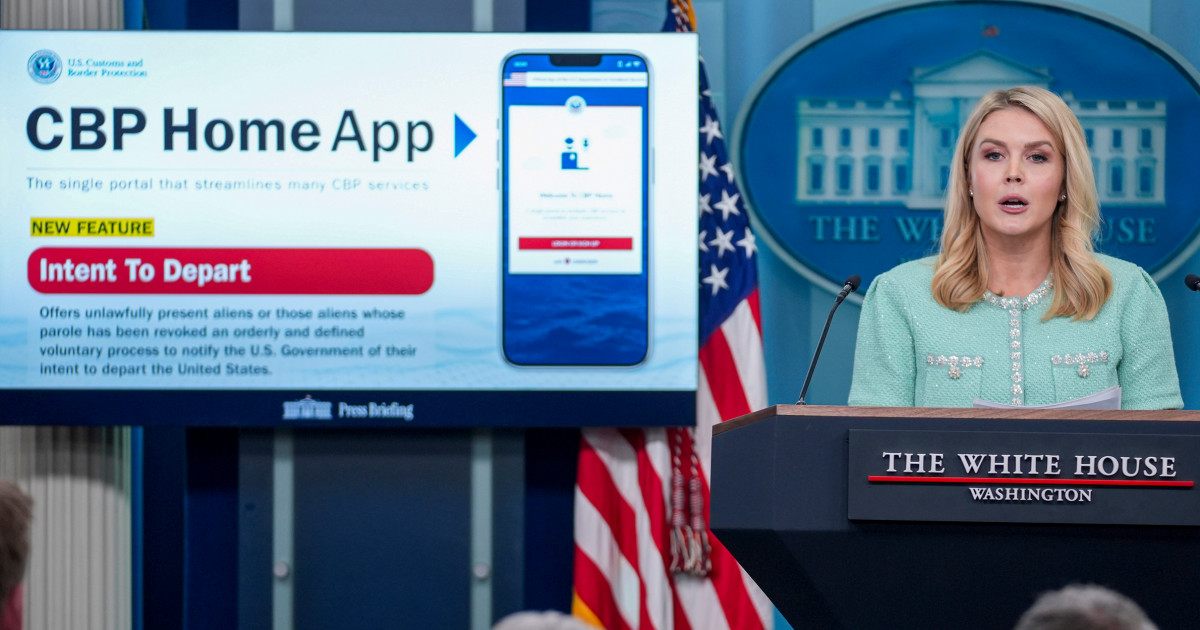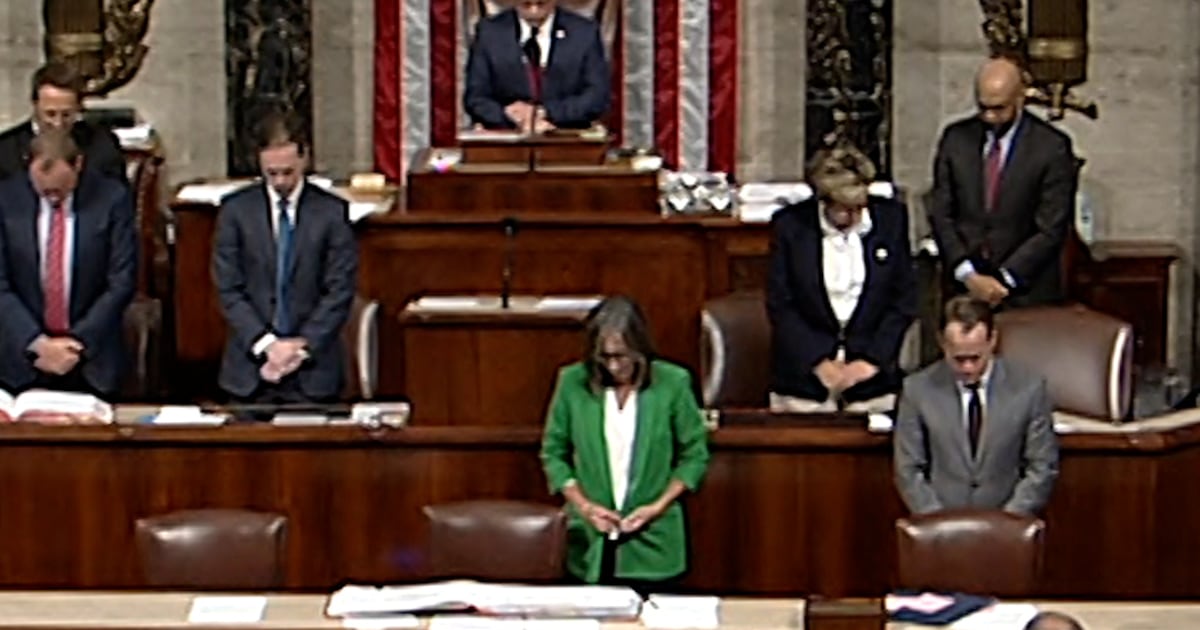
The Trump administration has been urging immigrants without legal immigration status to self-deport, with video and radio messages by Homeland Security Secretary Kristi Noem telling them: “Leave now — if you don’t, we will find you and deport you.”
But a number of immigrants and their attorneys told Noticias Telemundo that they’re not getting the documents and the guidance they need, and haven’t been able to leave.
“I felt sad, honestly,” Jairo Sequeira said about his failed attempt to return to his home country of Nicaragua. He said he tried to self-deport at the end of May and filled out the voluntary departure form through the CBP Home app. Sequeira was turned away, he said, because he didn’t have a Nicaraguan passport, which was taken when he surrendered in 2021 to immigration authorities in El Paso, Texas, after entering the U.S.
“I never thought that would happen at the airport,” said Sequeira, whose suitcase still has a Nicaragua-bound sticker. “I was always in touch [with my family], telling them, ‘I’ll arrive at such and such a time,’ excited.”
After using the CBP Home app, he received an email, which he showed Noticias Telemundo. “Thank you for submitting your intention to depart the United States voluntarily. Your submission has been confirmed,” it said. Sequeira printed it out and took with him on his trip three days later.
He traveled from Georgia to Texas to catch a plane to Nicaragua. But when he arrived at the gate, an airline employee told him he couldn’t fly without his Nicaraguan passport. Sequeira explained that both his passport and Nicaraguan national identity card were taken by U.S. immigration authorities. Though he showed the agent the CBP Home email he got, he wasn’t allowed to fly home.
In response to questions from Noticias Telemundo, a Department of Homeland Security official stated in an e-mail that “tens of thousands of immigrants” have used the CBP Home app to self-deport. They didn’t provide an exact number or answer specific questions about the process.
Announced in early March, CBP Home is part of the Project Homecoming program, through which the Trump administration offers undocumented immigrants two options: leave voluntarily with the promise of government support and financial assistance, or “stay and face the process.”
Sequeira said that when he decided to self-deport, he asked a community organization in Atlanta, Georgia, for help filling out the form on the CBP Home app. Sequeira doesn’t know if the person in Atlanta who helped him fill out the information indicated online that Sequeira needed help with his passport and ID. With his own savings, he bought the plane ticket home.
Sequeira said he didn’t know how to recover the documents he gave to officials at the border and added that, at least until July 8, he had tried to get his passport replaced through attorneys in Nicaragua. But the attorneys back home asked Sequeira for his national identity card, which was also taken when he entered the country, he said.
Noticias Telemundo contacted United Airlines — the airline Sequeira was supposed to travel on — but in a brief email response, the company referred questions to Customs and Border Protection.
CBP then referred Noticias Telemundo to the Department of Homeland Security, which did not respond to specific questions. In an email, it indicated that foreign nationals seeking voluntary departure “through the CBP Home application may be eligible to receive financial assistance for their departure.” They also stated that, if requested, the U.S. government will assist them in booking tickets and/or obtaining necessary travel documents.
DHS did not explain what this assistance entails nor what happens to immigrants whose passports were withheld by U.S. immigration authorities or who have been unable to renew or replace their identification documents. The DHS official also did not respond to questions about how many people have registered to self-deport and are waiting to return to their countries.
According to information on the app’s website, those who register on the app are assigned a departure date approximately 21 days after signing up. However, it’s unclear what happens if an immigrant decides to leave before that deadline, or how long the process may take.
In early May, Trump directed Secretary of State Marco Rubio and the DHS Secretary Kristi Noem to take the necessary actions to facilitate “the rapid departure” of those who “do not have a valid travel document from their country of citizenship or nationality or who wish to travel to any other country willing to accept their entry.”
Regarding a $1,000 “exit bonus,” DHS states on its website that immigrants will receive it after confirming they have left the U.S. and landed in another country. It also says that a bank account is not required and that “the delivery method will vary depending on the guidelines and regulations of the specific country.”
‘I want to go to Nicaragua’
Titza Escobar didn’t know how to self-deport, but believed that if she turned herself in at a police station in Miami, Florida, she would be sent back to her home country of Nicaragua.
Escobar said she sought help from different places, including the police, a United States Citizenship and Immigration Services center and an Immigration and Customs Enforcement field office, but didn’t get the assistance she needed.
“There are many people who don’t want to leave, but when I wanted to leave, they didn’t take me,” said Escobar, who is originally from an Indigenous community in the Nicaraguan Caribbean and whose native language is Miskito.
Escobar said she was told she needed documents to be able to leave the country, but the 29-year-old mother of three children has never had documents nor a passport.
Escobar was crying outside the ICE field office in the city of Miramar when a group of activists found her and were able to provide help.
“She was completely in a situation of extreme vulnerability. She didn’t have a single dollar; she spent her last bit of money paying someone to take her to Miramar,” said Karla de Anda, an activist with The Right to Freedom Network who, along with María Bilbao of the American Friends Service Committee in Florida, provided Escobar with food and temporary shelter and also assisted her in completing the application form at CBP Home.
Bilbao accompanied Escobar to the Nicaraguan consulate in Miami — one of three remaining Nicaraguan consulates in the U.S. — where they agreed to help Escobar obtain safe passage home, after she told them she had suffered domestic abuse while in the U.S. and presented a police report detailing that her husband threatened to kill her.
According to Bilbao, Escobar was told that a safe-conduct permit can take 15 days to obtain, a passport up to four months, and that it’s a process immigrants must complete in person. Escobar is presently waiting to receive what she needs to return home.
For some Nicaraguans, applying for a passport or renewal is no guarantee of obtaining one: independent media and human rights organizations have reported dozens of cases in which the process has been denied or indefinitely delayed within Nicaragua or at consulates abroad, especially for opponents of the current government and sometimes their families.
For immigrants from countries like Venezuela — which doesn’t have consulates in the U.S. after a severing of diplomatic relations — the situation is even more complex.
‘People are distrustful’
Christina Wilkes, an immigration attorney in Maryland and Washington, D.C., told Noticias Telemundo she had a client who wanted to self-deport but was “terrified” of using the CBP Home app and of being deported before he could leave voluntarily, so he sold his business and bought his plane ticket to Mexico.
Another client had a passport, but his wife and children, who are Venezuelan and have been in the U.S. under Temporary Protected Status, don’t have passports.
“And that’s the problem: you can’t get Venezuelan passports in the United States,” Wilkes said, adding that her client will try to naturalize the children in the Dominican Republic, where he is originally from, and obtain documents from that country for them.
The self-deportation process through CBP Home is very new and unclear, Wilkes said. “I think that because people are distrustful; most of the people who are leaving are leaving quietly, and without using the app.”
Unlike them, Juhany Pina used the app when she decided to self-deport. After a month of waiting for instructions, authorities assigned her a travel date, but she said they never called her again.
Instead, the Venezuela native used her Mexican passport — she had lived there before coming to the U.S. — and managed to board a plane to Mexico in early July.
Pina said she’s part of a WhatsApp group with more than 100 members where immigrants like her share the setbacks they’ve experienced during the self-deportation process.
“We thought it would be a much faster process,” Pina said.
An earlier version of this story was first published in Noticias Telemundo.








